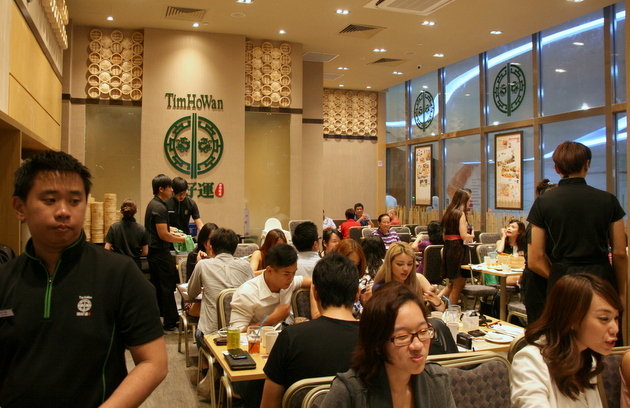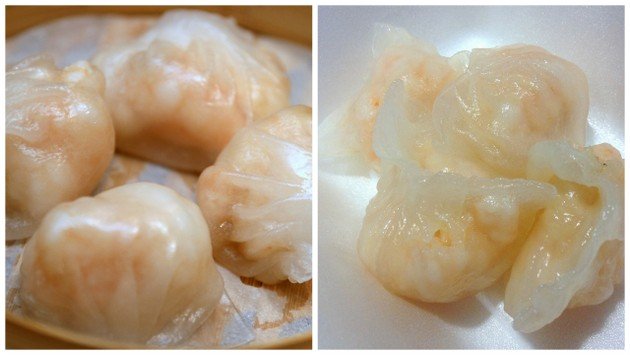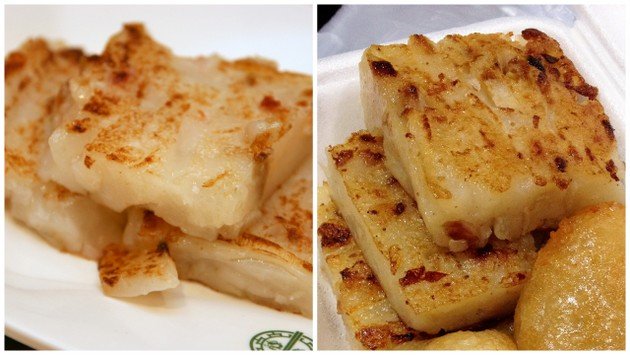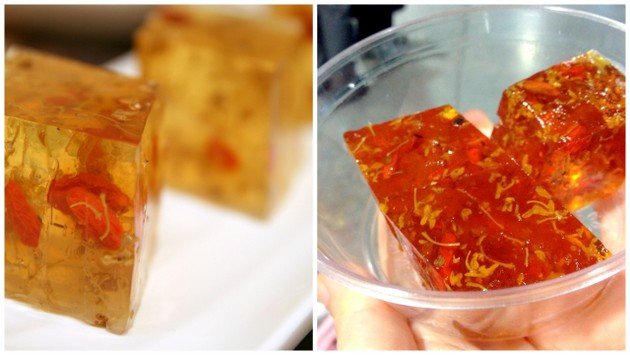
Tim Ho Wan Singapore vs Hong Kong
By Catherine Ling - Friday, Jun 28, 2013
It’s a veritable dim sum dilemma. Hong Kong’s much loved Tim Ho Wan has made it to Singapore, but the question is – how does it compare against the original? Does this mean we won’t need to make a beeline anymore for the Hong Kong outlet (now that they have several outlets)?

Tim Ho Wan made its name by being the first hole-in-the-wall eatery to earn a Michelin star, and sees long queues at its outlets in Hong Kong with waiting times of two hours or more. The Singapore outlet also now draws almost equally long queues.
We managed to do a comparison between the Singapore outlet (#01-29A The Atrium@Orchard 68 Orchard Road 238839) and the Hong Kong outlet at iFC Mall (Podium Level One, Shop 12A, IFC Mall, 8 Finance St., Central, Hong Kong, Hong Kong S.A.R., China). We had to do a takeaway for the Hong Kong outlet, so that may have some bearing on the dim sum quality (freshness is important) but it was eaten almost immediately.

1/ The signature baked buns with BBQ pork
The Singapore version was much sweeter (perhaps to cater to the Singaporean palate) and had a thinner bun skin. The filling was pretty generous. Chef Mak Kwai Pui was in the kitchen though, as it was the first few days of operation, so we can imagine quality control would be tighter.
The Hong Kong bun was thicker and more chewy – they clearly used more dough here. The filling was also less sweet and less reddish. It does seem like the Singapore one was prepared with more finesse, but the cloying sweetness can be a bit too much there.

2/ The Har Gau or Shrimp Dumpling
The Singapore ones are fairly large and juicy. They look like they have more than one shrimp encased within. The skin is marvellously thin and translucent, with just enough tensile strength to hold the filling. This har gau would even pass muster in most fine-dining restaurants.
Somewhat surprisingly, the Hong Kong ones were much smaller in comparison, and look much more casually made. You start wondering how this got a Michelin star, but then again this is from the iFC mall outlet which did not win a star, (the original winning Mongkok outlet is closed; so only the Sham Shui Po outlet now has a star).

3/ Pan-fried radish cake
The other signature item is the pan-fried radish cake. In Singapore, the radish cake is almost ethereal in its softness, with discernible strips of radish. However the taste is just too bland and subtle, so it doesn’t quite get off the ground.
The Hong Kong one is firmer, much more greasy and the radish strips are far more chunky. The “lap cheong” or waxed sausage flavour did seem a bit more pronounced, but that could have just been the luck of the draw with the pieces we got.

4/ Osmanthus jelly
Osmanthus jelly with wolfberries – the Singapore version is fairly delicate with just enough osmanthus to give the jelly a pleasant scent.
The Hong Kong one is much more overpowering. You can practically tell from the colour of the jelly. Their other dessert, the famous steamed egg cake was pretty much the same in both countries.
So, surprisingly, from this one-off trial, some items are actually better in Singapore than in Hong Kong (for the Singapore palate at least). But then again, the Hong Kong items are cheaper. In fact, one major appeal that Tim Ho Wan enjoys in Hong Kong is its affordability. A reasonably decent dim sum meal can be had for about S$10 per person. You’d probably have to fork out easily 50 per cent or more in Singapore.
Still, for Tim Ho Wan in Singapore, the dim sum quality is pretty decent for its price (S$ 4-6 per dish) but you may wonder if it’s worth the long waiting time. Perhaps when the Toa Payoh and four other outlets open, the queues will ease somewhat. Hopefully they can still maintain the quality across outlets then.


